In the face of digitalization and the pandemic’s impact on business workflows, the investment industry’s focus has shifted to online platforms. They allow wealth to grow, and customers understand it. In Australia alone, the investment platform market was US$680 billion in the first half of 2020, with positive growth of 8 percent in the quarter. This trend is global and clear for fintech companies and startups. Today, competing platforms...
Health insurance companies have worked on the global market for a long time, and the industry is enormous. But not many healthcare businesses consider the need for mobile apps and neglect them. By doing so, insurance companies lose a significant part of their customers. According to the Accenture 2020 Digital Health Consumer Survey, 75 percent of patients understand the importance of healthcare apps and are ready to use the min personal insurance programs.
Smart mobile solutions can help companies offer users a better service, improve decision-making, and provide precise information in real-time. Apps make health insurance convenient, fast, and easy for customers and increase income. But these goals are achievable if you have a good understanding of what the solution should be and what you expect from it.
This article will discuss the advantages, business models, and features of such web and mobile applications, how to create a health insurance app, and how much it can cost.
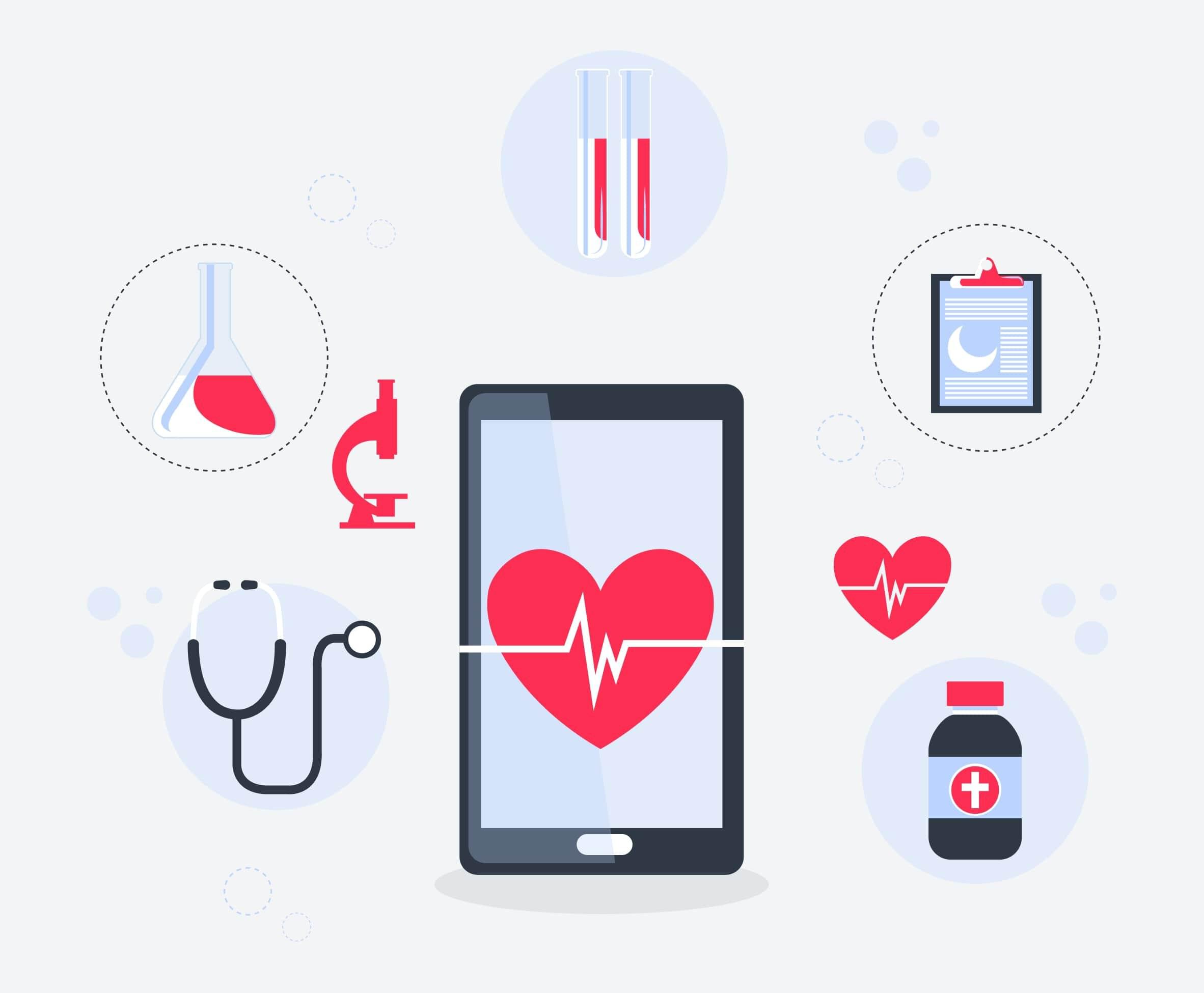
Insurance and Healthcare Mobile Apps: Trends at the Industries’ Confluence
According to McKinsey, personal health products occupy a considerable part of the industry’s global market. Medical insurance’s revenue is expected to reach €2 trillion by 2021 and €2.6 trillion by 2025.
The COVID-19 pandemic has accelerated healthcare services transformation and health insurance app development. Companies are mastering telemedicine, high-level patient data analysis, and other technologies. According to Allied Market Research, they are making the biggest contribution to the healthcare insurance market’s growth, which is expected to reach US$66 billion by 2021. Mordor Intelligence conducted research showing that the United States occupies first place in terms of the medical insurance market, with US$1 trillion in total revenue as of the beginning of 2020.
The mobile health solutions market is also expanding and is expected to reach US$213.6 billion by 2025 (from US$50.8 billion in 2020). The uptake of digital technologies among patients and healthcare personnel is caused by growing smartphone adoption, increasing utilization of connected devices, and high demand for remote services. The trend is global, and the whole world is demonstrating a steady perspective:
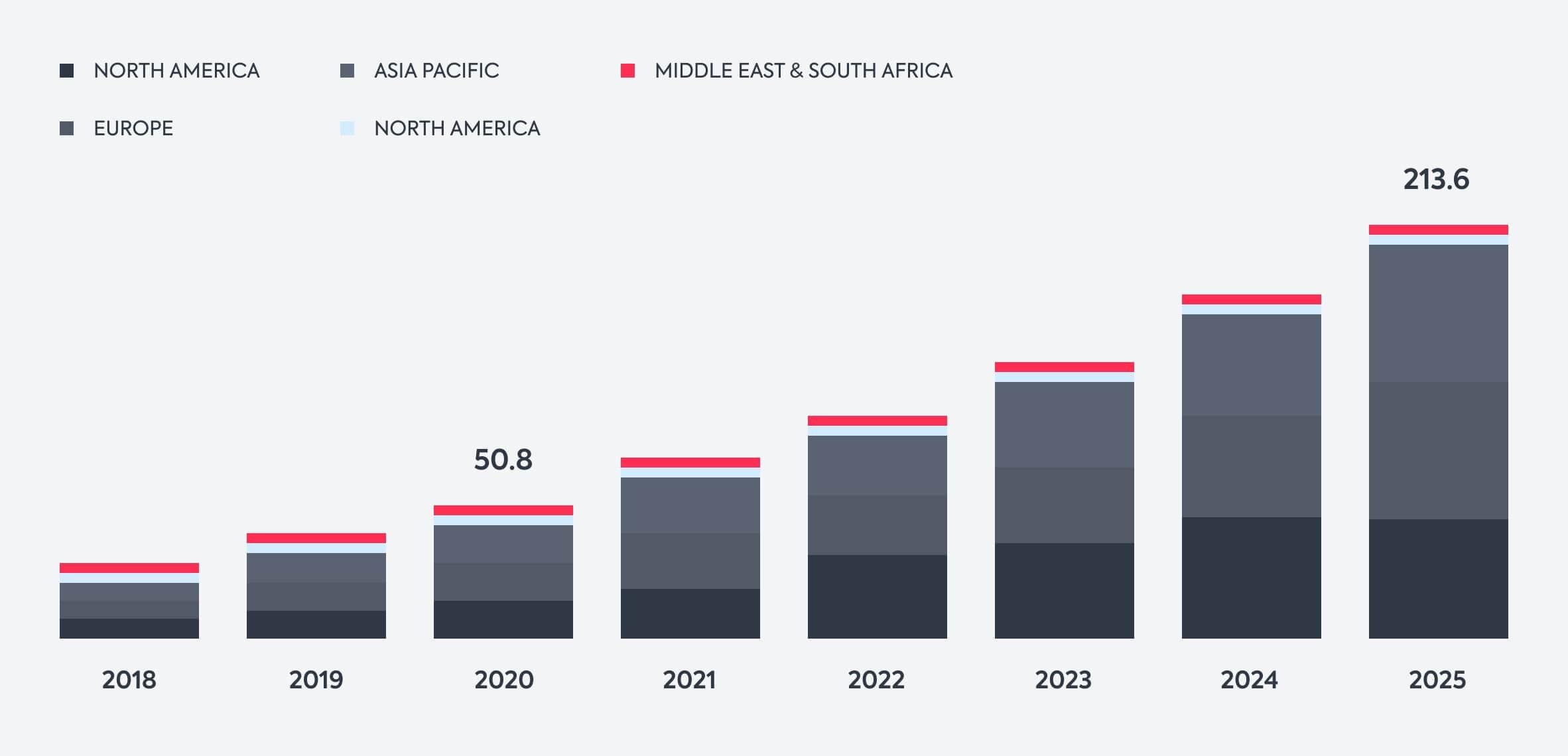
Benefits of Health Insurance Applications
The proliferation of mobile health (mHealth) and online insurance is driven by multiple benefits for both patients and providers. The healthcare applications combine the functional environment and solutions to manage company workflows and improve information exchange between clients and personnel.
The mobile technology turns the app into a useful customer service tool that eliminates the need for intermediate agents.
Benefits for Customers:
- Easy doctor search in the insurance network and on-demand access to all specialists;
- Authorized and secured permission to message the doctor;
- No need to visit the clinic and feel unnecessary stress due to asking small questions;
- Lower cost of service and higher ease of use with apps accessible on any device;
- Getting the insurance and coverage without excess paperwork;
- A private treatment plan that meets the customer’s needs.
Benefits for Business:
- Enlarging the base of clients due to access to home-care and discharged patients;
- Better customer service by eliminating long queues, cancellations, and missed appointments;
- Increased efficiency on both onsite and remote workplaces and freedom to collaborate with various specialists on patient cases;
- Personnel optimization: fewer dedicated call center employees are required, and each manager can work with a large number of clients;
- Quick integration with electronic health record (EHR) and other clinical systems and easy data exchange between clients and insurance company;
- Ability to treat more patients simultaneously, attract new customers, scale the business, and increase revenue.
Challenges of Health Insurance Applications
Health insurance applications aren’t necessarily a simple solution. Consider that healthcare is complicated to navigate, clinics are slow in decision–making, and there are many challenges to face while developing a health insurance application.
Sharing medical data with patients, health insurance systems, and partners
In 2019, the CCM conducted a survey, during which it discovered thatalmost 30 percent of medical organizations cannot provide sufficient interaction even for their departments. The data exchange with third-party systems has been successful in even fewer cases. Pieces of information are spread across multiple organizations, and it is difficult for providers to streamline massive data amounts gathered for years.
Interoperability problems of health insurance app development can be solved by open and custom APIs that:
- Help to transfer data between systems easily;
- Improve communications and customer service; and
- Allow the creation of apps that can schedule doctor’s appointments and manage chronic diseases like diabetes.
As we at CHI Software know from practical experience, API integration tools can also save time and money on your health insurance app development. They allow linking data points from multiple sources to create complete sets to improve analytics and treatment results. When you make a health insurance mobile application with third-party software integration, it becomes transparent, and all patient history is consolidated in one place.
Data protection, privacy, and security
Personal data protection is an ongoing top challenge for all mHealth and insurance providers. First and foremost, the application should have a flawless privacy policy, and the owner has to provide access to it before the app is downloaded.
It is recommended to use APIs when you create a health insurance mobile app. They ensure multi-level data safety and provide threat prevention tools. At CHI Software, we also successfully implement cloud solutions like AWS, Azure, and Google Cloud to achieve the level of data protection that meets the most security-sensitive organizations’ requirements.
The app’s safety can also be ensured with:
- Tiered application and database access — a strict password policy, authentication by Touch-ID or Face Recognition module, etc.;
- An encrypted communication layer and secure SSL connection protocols that protect data being exchanged between customers and the server;
- Role-based authentication and permissions management; and
- Suspicious activity and brute force app login detection and prevention.
EHR interoperability
Despite improvements in EHR technology, it still contributes to data silos, and interoperability remains an issue. When you build and implement a health insurance mobile app, it is challenging to recognize a specific patient in the EHR system, as there are no common standards or single identifier for customers. To compare all e-records and find information about a person in them, medical professionals have to invest a lot of time.
APIs can also address the reasons behind EHRs’ mess. They provide an instant connection with e-records and other existing data references. To ensure secure integration with a third-party EHR, we can establish a VPN tunnel that connects a hardware-driven VPN gateway on the client-side with a virtual VPN gateway on the app’s side.
The Best Health Insurance Apps List
Aetna Health (iOS and Android)
Among the best health insurance apps, this U.S. company’s product stands out due to its variety of insurance plans. It offers about a dozen types, including dental, pharmaceutical, and behavioral. There are around 22 million Aetna customers in the U.S. alone, and they receive a personalized experience and many features like:
- Plan and claims management (including sorting and payment);
- Medication refills;
- Specialist, clinic, and pharmacy search;
- Plans and coverage information checking;
- Insurance ID–cards access.
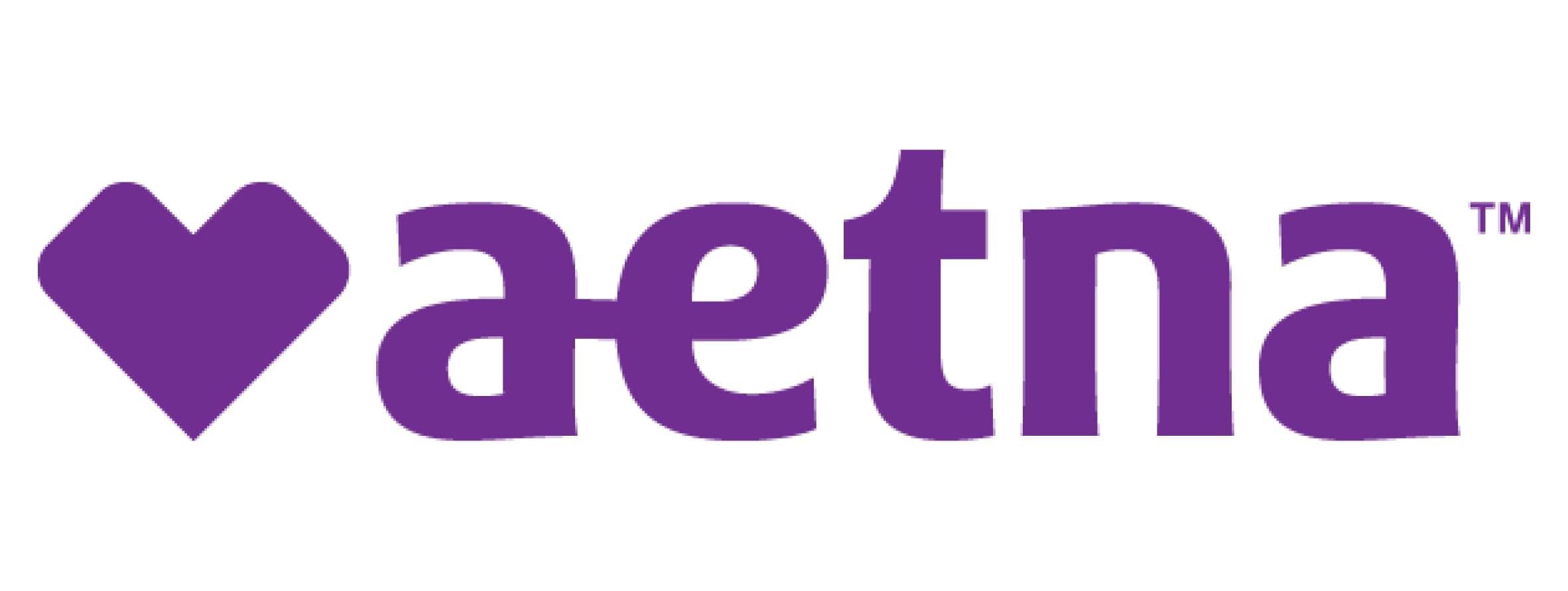
Health4Me (iOS and Android)
This mobile app was developed by UnitedHealthcare, the UnitedHealth Group’s business segment. By the beginning of 2020, its revenue reached US$240 billion. The Health4Me app has a unique feature, GlobalMe, that makes it possible to get info about local health systems, find doctors, directly pay doctors, and issue referrals to trusted specialists.
The key app’s features:
- Virtual ID cards access;
- Health insurance information and prescription management;
- Doctors, nurses, medical and urgent care centers search and contact;
- Medical and drug costs estimation and price comparison;
- Claims status and account balance checks.
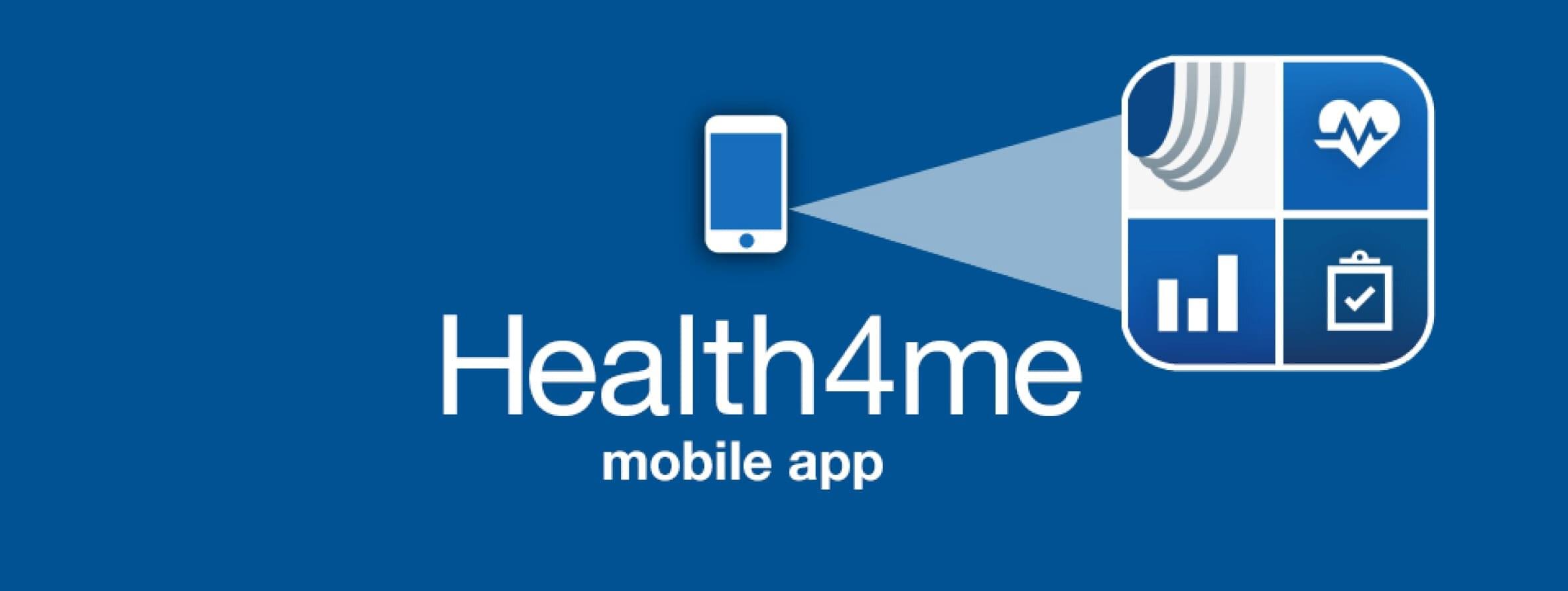
myCigna(iOS and Android)
Cigna is a U.S. marine insurance company founded in 1792. At the beginning of 2020, the number of customers reached more than 165 million. The myCigna app is one of five mobile applications the company has created to cover all healthcare needs. The app allows users to manage info on the go and search for health insurance providers in a certain area.
Other features:
- ID access (email, fax, ID cards);
- Account balances, claims, and deductible expenses viewing;
- Blood pressure, cholesterol, and other biometrics storing;
- Doctors’ visits and medication cost comparison;
- Prescription refills.

Health Insurance Startups That Deserve Your Attention
Not only well-known and large corporations operate on the private insurance market. Actively developing startups are also involved and try to make a health insurance mobile application. They are on the rise and offer engaging, promising products to a broad audience.
Oscar Health
This New York startup rose on the wave of ObamaCare, and so far, its total funding has reached $727,500,000, which is an extreme amount for insurtech. Oscar Health is a new type of B2C healthcare service aimed at users who don’t have an employment contract with health insurance coverage.
The Oscar Health insurance app appeared in 2012. In 2020, it has nearly 250,000 customers, and the startup’s revenue is more than US$1 billion. The app helps to:
- Manage health insurance policies with ease;
- Connect patients with doctors;
- Find trusted doctors in the users’ area; and
- Call or video chat with primary and urgent care clinicians.

Clover Health
A startup that decided to make a health insurance app for the North American market was founded in 2013. It is one of the fastest-growing U.S. Medicare Advantage companies with over US$160 million of collected investments. The startup also has a branch in Hong Kong.
Clover Health supports:
- Various plans that include routine dental, vision, and hearing coverage, and quarterly allowances for over-the-counter items;
- Easy access to specialists with in-person office visits and telehealth via video or phone;
- Prescription drug management and coverage — all users also get 100-day refills via mail order, and save time and money;
- Free Clover assistant that helps primary care doctors get a complete view of the patient’s overall health.
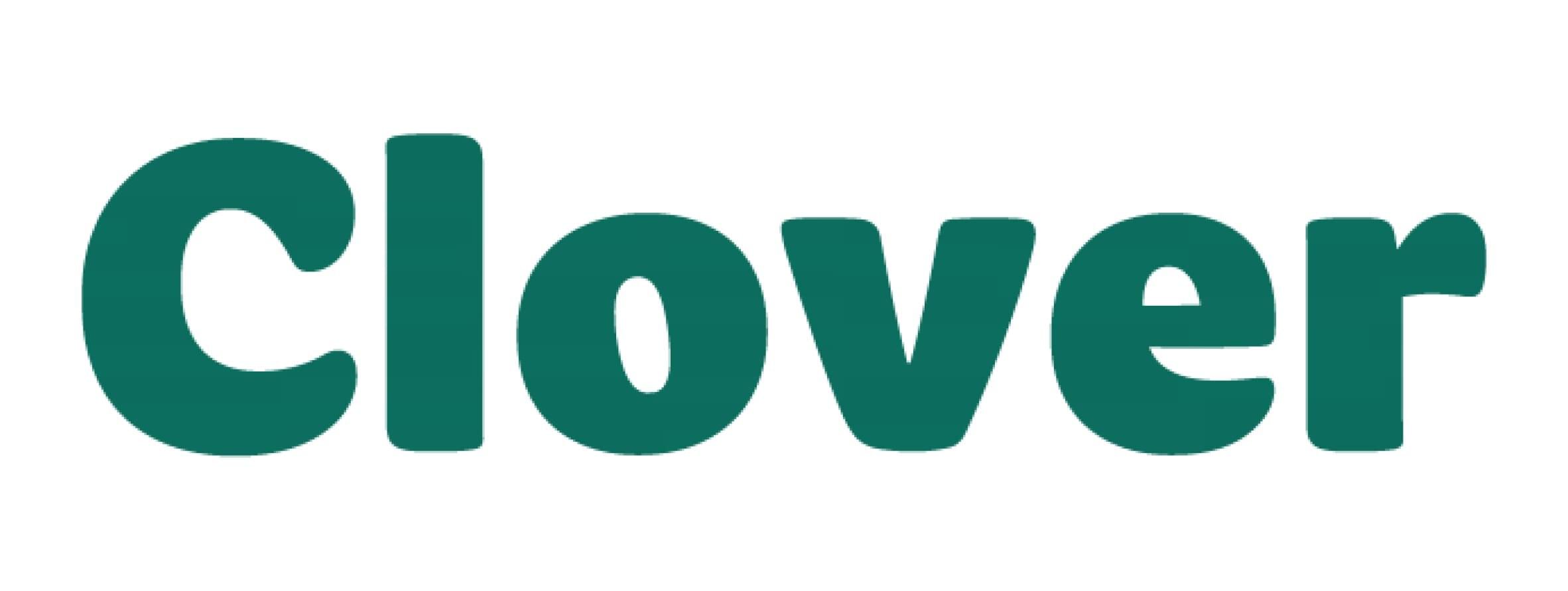
ZhongAn
This Shanghai-based startup boasts a massive number of users — today, there are more than 480 million. The company pioneered the sale of policies via the Internet and was one of the first to decide to create a health insurance app. ZhongAn has attracted more than US$900 million in investments and developed about 200 insurance products. Another distinctive feature of the company is that it has the highest automation level in claims processing (95 percent).
ZhongAn offers:
- Online video consulting (available 24/7);
- Online prescription of medicines and their delivery to the user’s home in less than half an hour;
- Medical Butler service (the virtual family doctor); and
- Unified management of family insurance, corporate programs, etc.

Business Model Canvas Overview
Not all applications have succeeded in revenue generation. According to the Research2Guidance report, only 11 percent of mobile health app owners collected more than US$1 million in income, and 56 percent of all projects have made US$10,000 per year or less. One of the main factors of success or failure is the chosen business model.
The “Freemium” Model
This is the standard model employed by most online games. In the case of mHealth, it’s effective for younger healthcare users and new families.
The company creates an application and tests it for free, promoting the viral buzz. The user base grows, and the owner refines the app and offers paid enhancements or upgrades. For instance, Berlin-based healthcare startup Asana Rebel, which uses this model, has already collected more than 150,000 paying subscribers and raised US$23.9 million in funding. The company’s annual revenue is US$2 million.
This approach is most justified if the target market is a consumer (a patient). The user accepts the conditions, and advertisers (e.g., Big Pharma) want to pay to appear on the site and sell goods via the app. Another revenue source is payments from physicians who offer their services to application users.
The in-app ad model fits well with free healthcare products and is used by 10 percent of owners, according to a Research2Guidance report. Selling prescription drugs in the app is also profitable. For example, the CVS/pharmacy app, which operates on this model, generates about US$5,000 a month in revenue and had been downloaded 300,000 times by October 2020.
The Licensure Model
Some apps are monetizing through licensing agreements. They assume that the IT companies transfer the software’s rights for a period in exchange for a fee. This business model fits companies with an existing user base and more than US$1 million in revenues, and hospitals revamping their medical systems.
Apps that use licensing to generate income are downloaded approximately 415,000 times a year. For their owners, the revenue sources are:
- Licensing a dashboard, service, or device to clients;
- Adding development fees, service sales, and sponsorship fees; and
- Selling medication and other products through an app.
A fascinating income source is the smart health devices sales that comprise 23 percent of revenue for “millionaire” companies. For example, ZhongAn, the startup mentioned above, has been promoting exercise trackers through its Bububao campaign. Customers received free insurance if they used these devices and reached the goal of 15,000 daily steps. The company also promotes health insurance plans. All sources of revenue brought ZhongAn US$16.88 billion in 2019 alone.
Health insurance reimbursement
Mobile health systems could find a new source of revenue if they perform diagnostic tests or provide therapeutic services. If the doctor prescribes an app (as is required in the United States), the company will be qualified for reimbursement under insurance plans.
There are examples of using this model already. The AliveCor Mobile ECG heart monitor, approved by the FDA, runs off iOS devices. Like regular clinical ECG monitoring, this device can be prescribed and qualifies for payment under health insurance. So, if you receive the state medical commission’s approval and convince doctors to prescribe the app to patients, the income will be higher than the other models can give. Only AliveCor Inc. has reached US$26.1 million in annual revenue per year, and this is just one of many examples.
At CHI Software, we know how to create a health insurance app for such a business model and successfully implement solutions integrated with IoT-powered tools and smart devices for therapeutic services. See how it works in our baby care application for monitoring crucial health indicators.
Case study — a measuring device and a mobile app, where parents can track characteristics remotely:
- Our team has designed an IoT wearable device: a cute baby ankle bracelet with sensors that continuously track oxygen saturation, pulse rate, and body temperature;
- We have developed an app connected with a bracelet to install on parents’ smartphones (Android or iOS);
- The bracelet’s sensors connect to the mobile app, transfer the results to a smartphone, and send alert signals via Wi-Fi.
The app and bracelet can be used in standard neonatal practice and newborns’ health insurance programs as a device to monitor the child’s vital indicators. After the solution’s certification, young parents will receive insurance compensation for the paid app services if a doctor prescribes them.
Technologies used: Ruby, Rails 4.2.6, PostgreSQL, Grape, Swagger, Ansible, RSpec, AES-256 encryption, Firebase Cloud Messaging, etc.

How About Regulations?
When you create a health insurance app, you always have to ensure compliance with legislation regarding commercial healthcare services and medical data processing. Here are the main ones:
HIPAA
In the United States, this act and HITECH (a list of additions to HIPAA) dictate the standards for collecting and processing sensitive medical data. If you want to create a health insurance mobile app that deals with personally identifiable patient info, it must meet those rules. For example:
- All medical information must be encrypted;
- Apps need to configure secure messaging, sensitive data visibility limiting, and throttling connected devices; and
- PHI-images (MRI, CT scans, and lab results) must be processed through HIPAA-as-a-Service hosting provided by BAA signatory companies.
For example, Skype has not signed a BAA, and it is better to implement HIPAA–compliant providers, like AWS or GAE.
GDPR, Data Protection Directive, and e-Privacy Directive
These directives, in place in the European Union, regulate data processing according to privacy rules and human rights laws, and only permit confidential data processing based on transparency, the proportionality of use, and legality. If you build a health insurance mobile app, you should note:
- Information can be processed only with the consent of the subject (system or mobile application customer);
- Data processing companies must inform the supervisory authorities and store data during the necessary period only;
- All data must be accurate, or it needs to be removed or corrected; and
- Sensitive data has to be protected from damage or illegal processing.
PIPEDA
You need to follow this federal law if you create a health insurance app for Canada and proceed with using personal health information for commercial purposes. The PIPEDA monitors the observance of people’s right to privacy and stipulates that:
- Companies can use personal information only with the consent of the user that can access and correct the data (usually confirmed by a mark in a checkbox);
- The user should be able to see what information is being processed by the system; and
- Companies must guarantee data protection from illegal use.
PCI-DSS Compliance
If your app has a payment gateway, and collects and processes cardholder data, you must assure PCI-DSS compliance. This standard applies to all who accept card payments, even if there are only mobile application integrations.
The provider has to be certified to PCI, but if your app passes card data for long-term storage, you can turn to Stripe, PayPal, or another certified gateway with libraries for Android/iOS. They send encrypted data as a token, simplify payment integration, and provide PCI-DSS compliance.
Health Insurance Mobile App Features
To figure out how to build a health insurance app, we must list the main features required.
User profile
This section is necessary for doctors to compare test results and monitor each patient’s health continuously. Like hospital cards, profiles accumulate crucial medical data that is stored in a cloud (recommended).
Allow users to choose an insurance plan using a questionnaire or provide information about available options. Comparison tables or charts make it easy to compare characteristics, features, and prices, and to manage programs.
Communication and support
There are three essential types of doctor-patient communication: voice calls from an app, video streaming, and chat messaging. The first one is a must-have feature that allows customers to urgently call a doctor or nurse and get answers to basic health questions.
When you build a medical or health insurance mobile app, you also have to add video for a one-on-one chat with a doctor. In recent years, the quality of smartphone cameras has increased significantly, and specialists can conduct fairly accurate examinations remotely, noticing even small visual disease signs. To set up streaming, you need integration with an API like Twilio.
Live text chat with doctors is useful for patients and allows managers to answer clients’ questions and work with several users simultaneously. It is crucial to ensure the privacy of chat with doctors and provide additional options like uploading documents directly to a dialog. Chat must be encrypted with end-to-end encryption SDK.
Support should be available to users around the clock. To take the extra burden off specialists, you can install a health questionnaire in the application and provide a FAQ section.
Document access, processing and sharing
This feature saves time filling in long forms or sending emails and makes it easy to find health insurance documents and send them to managers. To ensure safety when sharing medical documents, you have to use encryption.
The app should allow keeping the lab results, prescriptions, and medical records in one place. If the solution enables physician–patient communication, users have to be able to share their health documents with doctors.
A mobile app can also sync all data to allow users to see the claim statuses in real-time or even file a health insurance claim by medical bill photo. This option improves customer experience and simplifies the work of company managers.
Purchasing and payments
If you want to monetize the product, it is recommended to add a feature allowing users to purchase insurance policies and drugs from the app directly. In doing so, you must ensure data security and fraud protection. The most suitable tool for card payments integration into web and mobile apps is a gateway such as PayPal, Stripe, Braintree, Dwolla, etc. The technology is also used to handle online money transactions.
A payment gateway safely collects customer data on the app’s frontend part, processes it through payment APIs, and sends it to an acquiring bank or processor for the transaction. For better security, the gateway should support an authentication with token storing configuration settings for the Client SDK. For instance, Braintree prefers this method and generates a token using the Braintree Server SDK.
As an anti-fraud measure, you can add CVV validation with options like “CVV doesn’t match,” “CVV isn’t verified,” and “the issuer doesn’t participate in verification.”
” btn-url=”https://blog.chisw.com/peer-to-peer-payment-app-development-guide/” btn-text=”Read more”]
Alerts and reminders
Reminders help doctors and nurses see new patients. Moreover, they help users to take medications on time and help them avoid missing an appointment or insurance payment deadline. Push notifications and alerts allow users to immediately learn about the results of the claims consideration and other important points.
We at CHI Software go further and create solutions that help to maintain vital signs such as insulin levels of elderly people with diabetes. See how it works in our case study:
Our development team created the Insulin Pump App — a system for effective and accurate insulin delivery. The app also reminds users to take their medication. We provided:
- The schedule of taking/delivering insulin and push notifications that increase the safety level for people suffering from diabetes;
- A simple interface, accurate pulse technology for insulin delivery, and a replaceable reservoir;
- Data of insulin usage recording — the history is stored in a mobile app for further analysis.
The system is compact and convenient, especially for elderly people. Our app helps users to avoid life-threatening situations and maintain a high quality of life.
Technologies: C, BLE, ARM processors, etc.

How to Build a Health Insurance App Successfully
To build a health insurance mobile app, you need professional software development company expertise. A medical application that deals with vital services and extremely confidential data must be high-performing and created with no compromises on quality. Any little thing can lead to threats to patients and material losses. Therefore, enlist the help of qualified business analysts, UI/UX designers, QAs, and frontend and backend developers who are experienced in building mobile health solutions and follow a step-by-step plan:
1. Research
The primary stage is business analysis, competitors and opportunities research, the product’s market positioning, and listing the features. Here we should to:
- Define business requirements and product architecture;
- Create the business plan and in-depth technical documentation; and
- Elicit the best technical solutions.
At this stage, we find out how to create a product vision — a health insurance app’s roadmap. We build the design according to business goals and develop consistent information architecture. When we formalize the idea into the project scope, we should think about future implementations and ensure all solutions are scalable enough.
2. Technology stack
The technology stack depends on the choice of the platform. This could be iOS, Android, or cross-platform. In the case of health apps, the iOS-only approach is best for the United States, while Android fits the rest of the world. Remember, iOS users spend three times as much as Android ones, but overall, Apple customers’ quantity is less.
The official framework for building apps for Apple (macOS, iOS, watchOS, and tvOS) is Swift. If you’ve decided to serve iOS and Android devices, the React Native cross-platform framework is a smart choice. Its advantages are that it’s open source and has a significant memory allocation (but file sizes are more massive than Swift ones). Both platforms support third-party libraries and APIs.
According to the Research2Guidance report, 84 percent of health insurance apps took two years to launch, and the average time was 15 months. To speed up application development up to three to six months, you can use ready-made tools. API integration is still a challenge for developers, but we at CHI Software are doing it successfully.
There are many handy tools available: for example, the Twilio Programmable Video API works on iOS, Android, and all browsers without installing any plugins. The VSEE SDK integrates end-to-end encrypted video calling into your mobile app(and is HIPAA–compliant). VIDYO enables you to integrate real-time communications into your app on Mac, Windows, Linux, iOS, and Android platforms.
3. UI/UX design
UI/UX design should be based on the parameters of the devices used. The modern apps work on smartphones with a high aspect ratio (18:9) and bezel-less display. Apple uses 1x, 2x, and 3x sizes, and in the case of Android, designers must ensure compatibility with six sizes — from 120 dpi LDPI to XXXHDPI.
Another challenge is the implementation of artificial intelligence (AI), machine learning (ML), and augmented reality (AR) technologies. We at CHI Software use them actively, and our designers know how to work with them. Technologies make the application environment interactive, and the design needs to take into account new patterns and virtual objects that may be integrated.
The application should be convenient for patients with any physical abilities. Therefore:
- Take the time to review the WCAG 2.0 Guidelines for W3C recommendations and online content accessibility best practices;
- Simplify the adaptation process as much as possible by limiting the number of screens to a maximum of three;
- Consider one-handed navigation and thumb-friendly layout; and
- Use correct spacing: the tap area’s preferred size is 7–10 mm. The screen top is hard to reach, and in the case of larger sizes, it requires a change of grip.
4. MVP building
The MVP is a version of an app that contains the lowest number of features that satisfy early customers and allows gathering user feedback. Its creation aims at hypothesis validation, risk mitigation, fast product release, and better features prioritization.
The MVP version should provide users with simple must-have functionality:
- Admin panel and user profile;
- Doctor’s appointment booking;
- Secure video calls and conferencing;
- Chats/chatbots;
- Recording for reception;
- Database, etc.
A prototype and MVP must be tested on a real audience to learn about users’ interactions with the product. After feedback collection and characteristics/functions refinement, we can proceed to the product development stage.
5. The product creation and testing
After you make sure that your MVP is a success, you can proceed with the product development. It is worth adding features here that will further improve the service quality and bring more comfort to patients and doctors:
- AI-powered diagnostics;
- EMR/HER and HIS (health information system) integration;
- IoT-based tools and peripherals;
- VR/AR capabilities;
- E-prescribing, dosing calculators, and drug-interaction checking;
- Shared knowledge base and medical newsfeed;
- Patient progress tracking, predictive analytics, etc.
After app development, you have to fix bugs. With the help of testing engineers, you must ensure that the product meets the most stringent quality standards. For mobile apps, we at CHI Software apply QA service, covering the entire lifecycle, checking the software on multiple platforms and devices, and providing various types of testing:
- Functional and interoperability;
- Security and access control;
- Non-functional;
- Usability;
- Change related;
- Structural.
After you have developed and tested the app, you are ready to deliver the product and move it to app stores.
6. Post-release maintenance and support
It is not enough to know how to build your own health insurance app and sell it to customers. Remember that iOS and Android get updates every year. It is important that your application is up–to–date and works correctly on the latest platforms. Qualified post-release support and maintenance ensure scalability, quick implementation of new features, the best possible interaction of the system with the user, and consistently bring new customers and stable revenue.
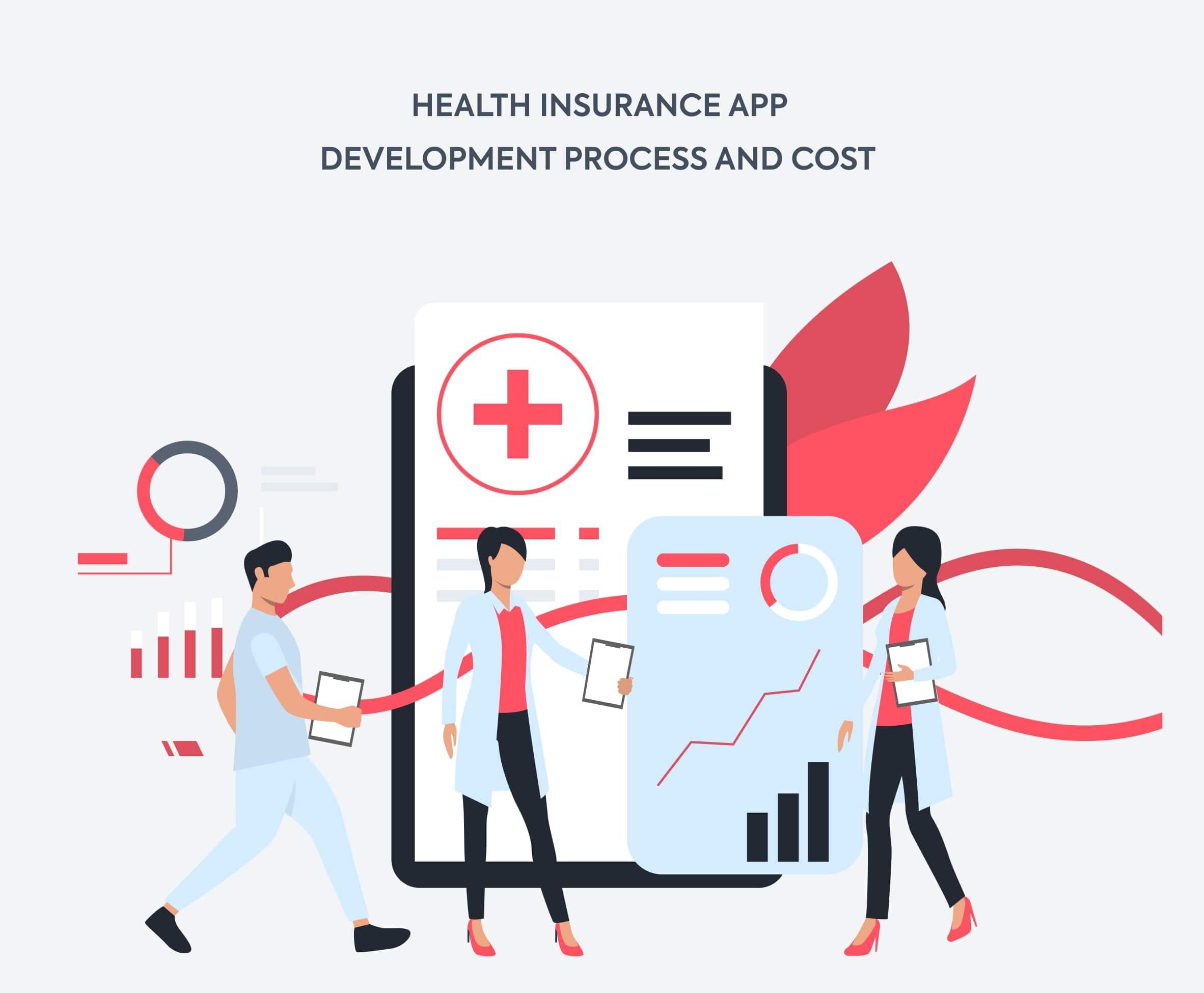
Cost to Develop a Health Insurance App
Development costs to make a health insurance app are influenced primarily by the app’s technical complexity, the number of features provided, and the team’s hourly rates.
At the bottom level, there are cross-platform mobile applications that make the most of the capabilities of the underlying web system. At a higher level are advanced products with their own mobile apps, secure, specially optimized for smartphones and tablets and provided with AI, AR, and IoT tools.
The hourly rates depend on location:
| Region | Price range, US$ | Approximate price, US$ |
|---|---|---|
| North America | 10–225 | 168 |
| South America | 21–107 | 34 |
| Western Europe | 32–167 | 70 |
| Eastern Europe | 20–97 | 35 |
| Australia | 32–142 | 110 |
| India and Asia | 8–80 | 26 |
Generally, the health insurance app development price can vary from US$59,000 to US$149,000. It should be noted that the cost is increasing: a few years ago, the average amounts were approximately US$30,000 to US$40,000. Depending on the application and the developer company pricing, the upper price limit can go up to US$425,000 and more.
Conclusion
Such a huge market as health insurance needs to be more modern and convenient for everyone, and apps have already become an effective way to improve the customer experience.
Mobile insurance products have enormous value for users. The apps simplify the health monitoring process, save time, and optimize everything that goes in between the patient’s initial issue and recovery. Building a mobile application is a win-win strategy, helping your clients get quality health insurance, while allowing you to be competitive and make money successfully.
Now, not all insurance companies currently have progressive and convenient mobile products, but they learn quickly. Therefore, there probably won’t be a better moment for developing a health insurance application than now.
